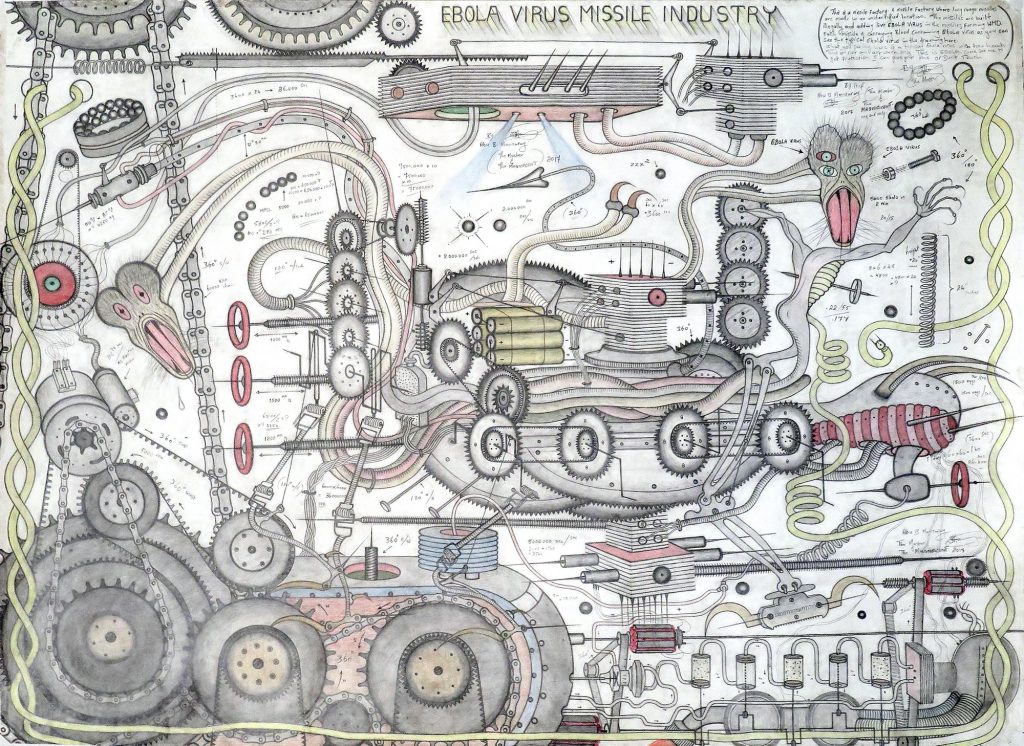
Abu Bakarr Mansaray, Ebola Virus Missile Industry, 2017, ballpoint pen, coloured pencil and graphite on paper, 120 x 150 cm, courtesy the artist and Galerie MAGNIN-A, Paris
Abu Bakarr Mansaray, Ebola Virus Missile Industry, 2017, ballpoint pen, coloured pencil and graphite on paper, 120 x 150 cm, courtesy the artist and Galerie MAGNIN-A, Paris

Abu Bakarr Mansaray is a devoted autodidact of visual arts, industrial design, engineering, mathematics, and physics who persistently studies these disparate knowledge systems to give order to the physical world. Growing up in Sierra Leone, he witnessed the country’s most brutal period of civil war, which left fifty thousand dead and many more injured, raped, or mutilated and faced with impending economic, political, and social collapse. The artist narrowly escaped the 1999 Freetown massacre but has since returned to his country, fostering within his work a desire to alter the sinister political forces at play by revealing their concealed mechanisms and suggesting methods for disrupting their devious courses.
Mansaray has developed a unique mode of designing, engineering, constructing, and inventing simultaneously, first by making small sculptures from scraps of wire and metal and then through intricate drawings of futuristic-looking machines. Drawing is a vehicle for the artist’s social critique and connects his own wartime memories with current upheavals and ongoing issues like border control, the military-industrial complex, and the dictatorship of technology. Well before the current pandemic, he envisioned human-machine hybrids governing the Earth in works like Ebola Virus Missile Industry (2017), Suffisticated Hell Lizard (2011), or A Nuclear Mosquito from Hell (2004). His latest works depict tentacles, clawed mechanical fingers, and venomous tails stretching from a device’s brain that resembles a nuclear bomb. These technical designs are executed in pencil, ball-point pen, and colored crayons and are rife with dense annotations and calculations that perform like DIY handbooks for self-empowerment.
Drafts of Afrofuturist visions interwoven with Rube Goldberg machine logic and images from comic books, Mansaray’s drawn inventions also recall Leonardo da Vinci’s polymathic eagerness to overcome physical obstacles and invent the heretofore inexistent. Each drawing serves as a preparatory sketch for an elaborate machine and thus operates as a construction manual to guide human imagination towards overtaking, reconquering, and eventually shifting the seemingly automated course of social, biological, technological, or militaristic (self-)destruction.
Abu Bakarr Mansaray, Ebola Virus Missile Industry, 2017, ballpoint pen, coloured pencil and graphite on paper, 120 x 150 cm, courtesy the artist and Galerie MAGNIN-A, Paris